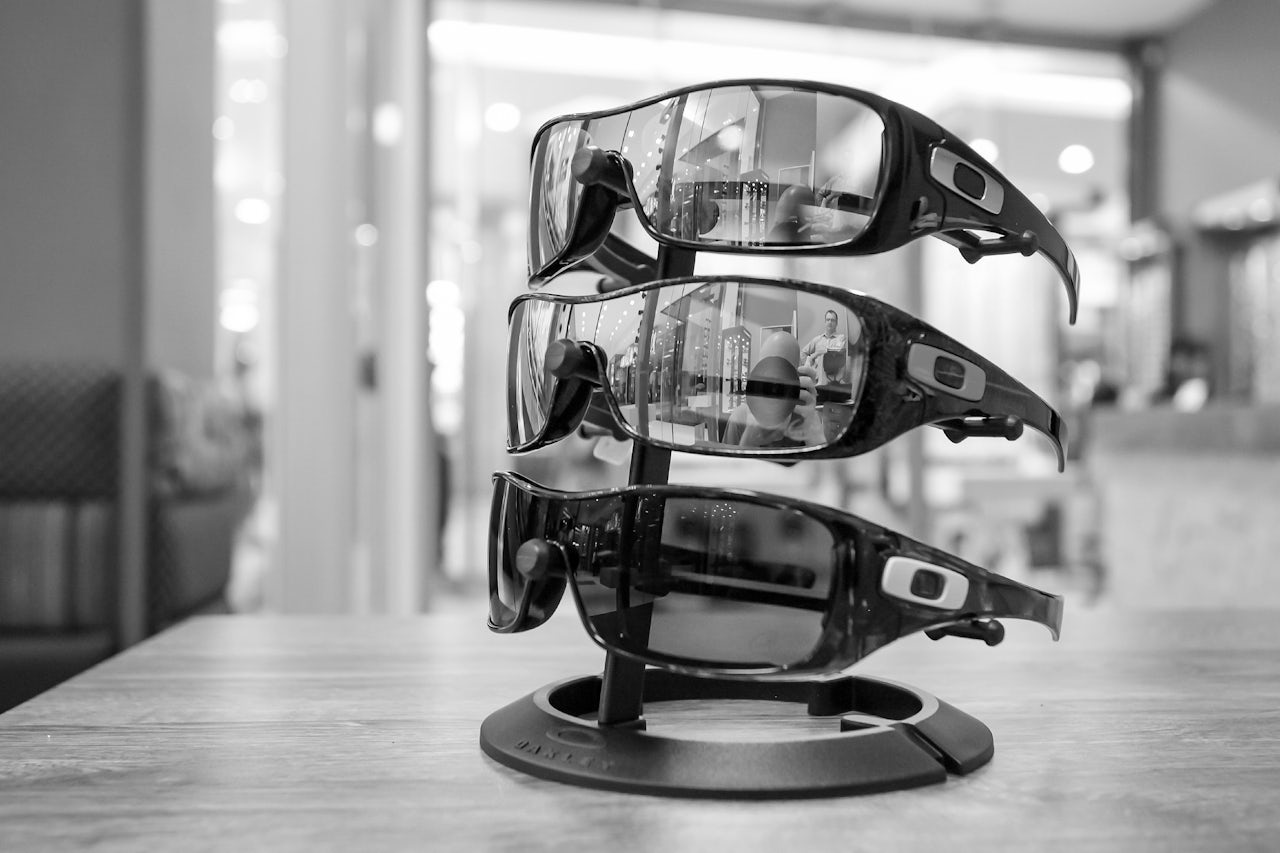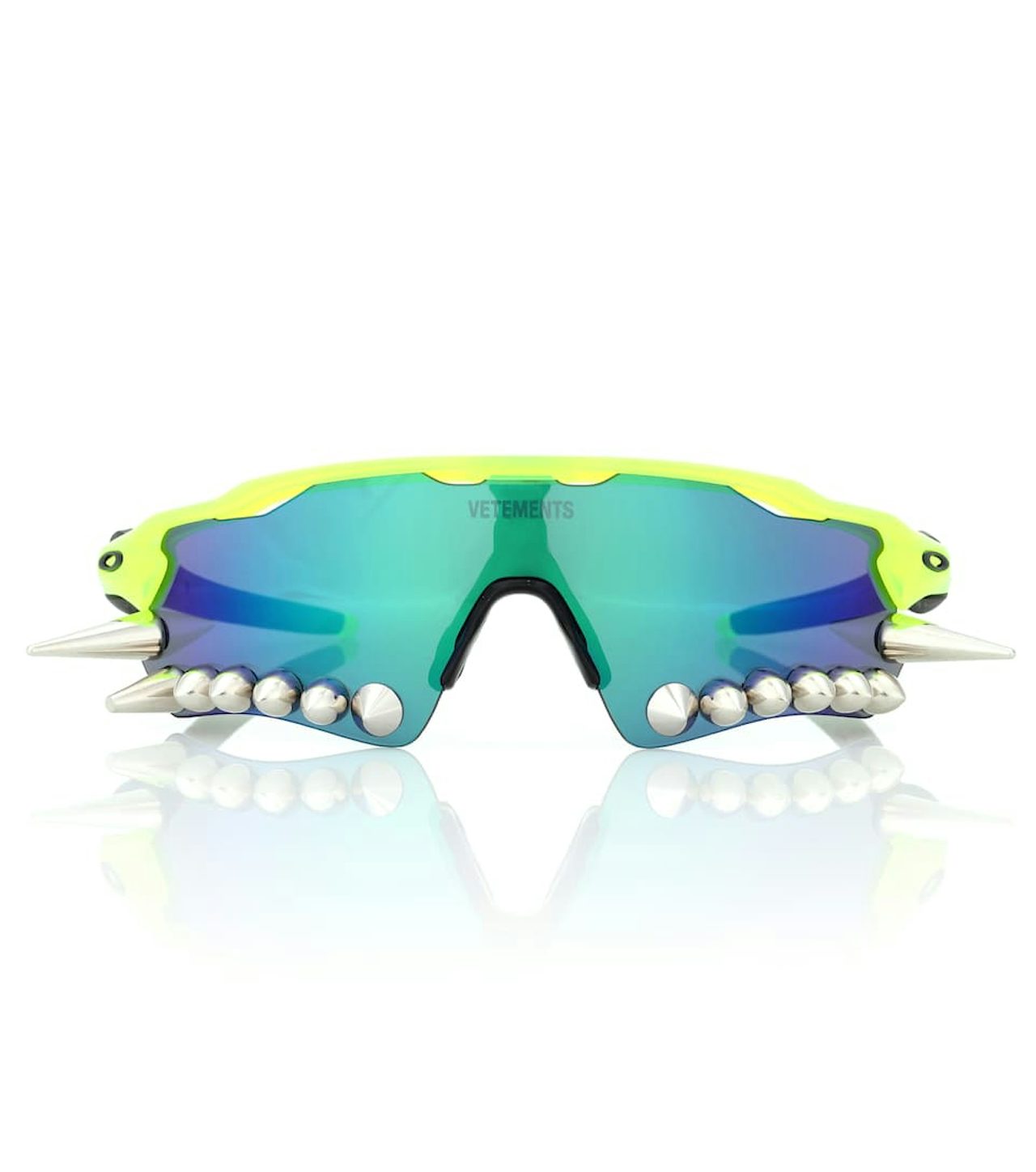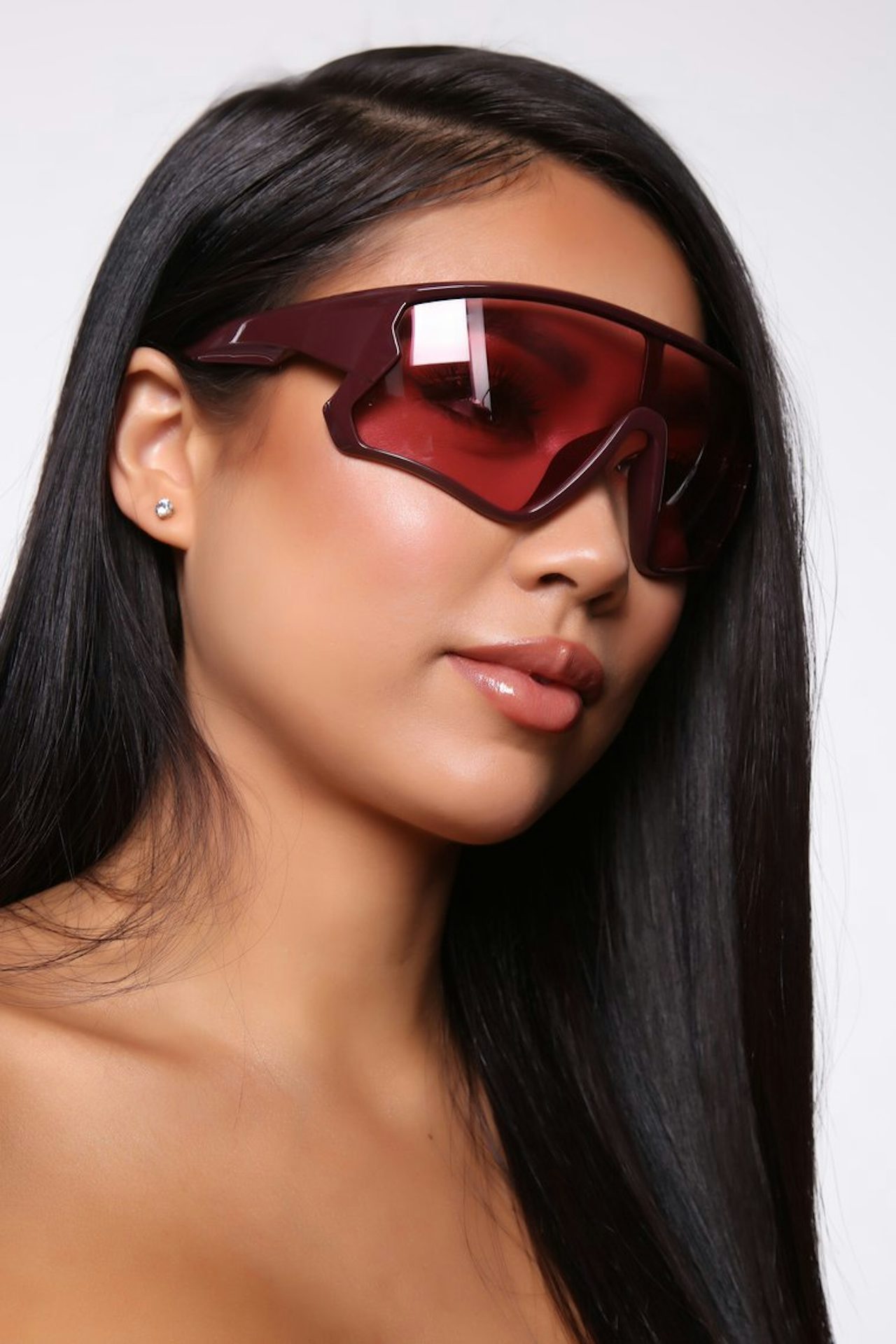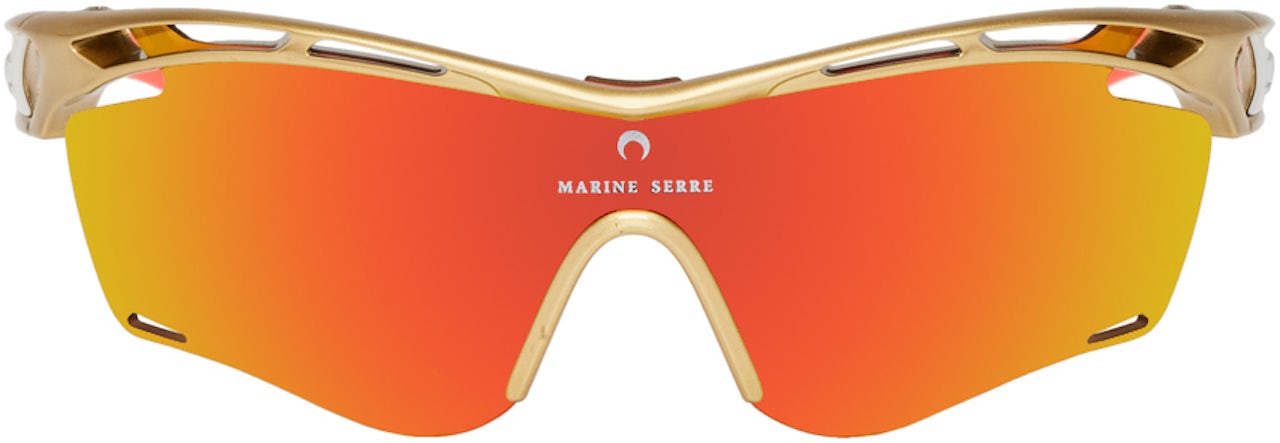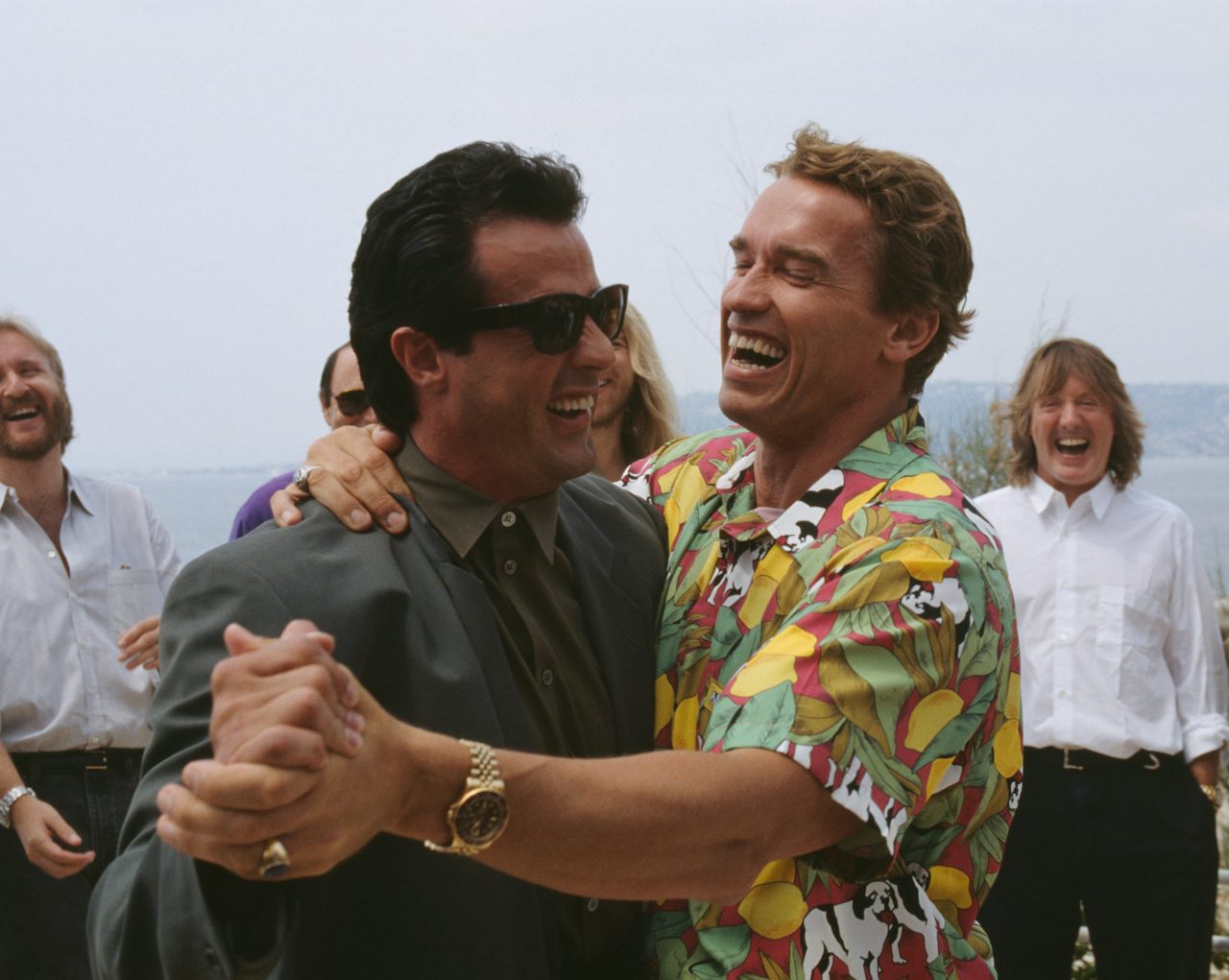In the mid aughts, I attended a weird upstate New York day camp where you could very earnestly take classes like Blacksmithing 101 and Intermediate Putzing Around in a Creek While Looking For Bugs. Most of the kids were like me: born in the latter half of the ‘90s, from nice suburbs of Albany and parents who wanted them to have access to the great outdoors. The instruction was not always as advertised. One summer I did “spelunking class,” which actually meant stumbling around in caves with a Jeff Bridges-esque septuagenarian who shepherded me and my fellow middle schoolers into a deep pool of standing water, and then got flustered when we complained about being cold.
What we wore during our time at camp was crucial. We were out in the elements, so open toed shoes weren’t really an option. Long pants were a must, because ticks can latch onto anything and Lyme disease is a huge problem in upstate New York. Most importantly, you had to wear sunglasses, which for a lot of people — especially the camp instructors — meant one thing: Oakley shades.
Oakleys are the official sunglasses of ATV owners, preteens who play travel baseball, and people who are obsessed with Tony Hawk. Up until recently, wearing them was not very cool unless you fit into one of those groups of people. They didn’t need to be: Sunglasses designed for outdoor woodworking and doing tricks on a BMX bike should be functional, not chic. Recently, however, this has changed. Weird reflective sunglasses in various Gatorade-tinted hues are now what you might consider to be hip and relevant among fashion-minded individuals, prompting a second, hard look at the entire Oakley phenomenon.
The Oakley brand was born in the late ‘70s by a man named James Jannard. It first started out as a motocross handlebar grip brand, before shifting focus to making shades for the mountain bike-riding, tough outdoorsman audience about a decade later. Slowly, the brand gained a sizable following; by the mid ‘90s, Oakley went public, and Jannard became very, very rich. Now you can buy Oakley shades at the mall, along with plenty of other aggressively functional outdoorsy clothing staples at Dicks and Sports Authority.
After a long existence as bro-ish signifier, Oakley-inspired and adjacent sunglasses first started to pop up on runways a little less than a year ago, when designers presented their spring/summer of 2019 collections. Alexander Wang did a collaboration with the brand on the runway, which he styled with bandanas and fanny packs. Marine Serre, the 27 year old LVMH winner, did a pair of Oakley-type shades as part of her Hardcore Couture collection, alongside skin-tight bicycle shorts and anime-inspired prints. Demna Gvasalia, the creative director of Balenciaga, tried his hand at the trend with his beloved Vetements project.
In the past few months, these facsimiles and collaborations have become available for public consumption, and we’re beginning to see them get co-opted by online knock off retailers. If you visit the extremely Gen Z fashion retailer Fashion Nova, you can find a handful of Oakley derivatives on the first page. You can buy fake Oakleys at Forever 21, and at all of those weird curated “vintage,” stores in bougie neighborhoods in big cities. Recently, I was at the park with a friend, saw a person tanning on a towel wearing fake Oakleys and a bikini. (I knew they weren’t the real deal because they were missing the brand’s signature “O” on the rim, and also the cut of the shades rendered it closer to a visor.) Later, we walked around and went into some overpriced boutiques to fantasize about buying cowgirl boots and scented candles — you better believe there were fake Oakleys there, too.
Fashion has always had a boner for repurposing the worst fashion staples from the suburbs, especially in the last few years. Alessandro Michele’s Gucci made some fake Keens in the spring. Balenciaga did a pair of platform crocs with bespoke jibbitz (the little snap on pins that you can fashion onto a pair of crocs) that are now on display at the Met in part of the Costume Institute's exhibit, Camp: Notes on Fashion. From trend pieces about Tevas to manifestos about gorpcore, high fashion’s interest with terrible suburban fashion is pretty well documented. Collaborations and ripoffs of these types of brands are ubiquitous, as designers find something new to fixate on every season. There are dissenters: Last year, while on a studio tour with the critic Cathy Horyn, the CEO of Birkenstocks complained that fashion people don’t really care about functionality, and said they’d turned down proposed collaborations with Supreme and Vetements. “There’s no benefit for us except prostitution,” he said. “Because this is just prostitution.”
Oakley, on the other hand, isn’t all that selective, and has been more than happy to capitalize off of the fact that their product is currently in the zeitgeist. When I reached out to the brand to find out why they wanted to collaborate with the upper echelons of high fashion, VP of Product Creative Brian Takumi, wrote that “with the ’90s trend blowing up, we’ve had to manage through some different filters as the landscape is much different. The speed of the markets, communication with consumers and retail landscape forces you to think deeper than being the flavor of the month...we are just looking to maintain our authenticity within sport without losing our identity.” In other words, enough people with lowkey misplaced nostalgia for vaguely Matrix-informed fashion decisions have convinced themselves that the ’90s are where it’s at. Oakley couldn’t help but “take advantage of the opportunities that present themselves,” to quote Yakumi. It’s opportunistic, but unlike Birkenstocks, Oakley has never been renowned for its subtlety.
More than the ‘90s, Oakley makes me think about the brand’s relationship with suburban living. Oakley speaks to a specific kind of suburban experience: not one that takes place within arm’s reach of major cities, but instead, one that inhabits the periphery of terrible and boring former industrial cities, the kind of places that urbanites know exist but choose to either ignore or make fun of until something terrible happens. These are sunglasses that are not particularly cheap, but are extremely accessible, worn by people making fashion decisions largely based on utility, with the actual “fashion” a nice bonus.
That’s something fashion is always interested in fucking with: How can we take this thing that is available en masse and tweak so that it gets transformed into something that is edgy and weird, or at least acceptable? And so I began to reconsider the humble Oakley, as I saw it around. It made sense that people were wearing Oakley sunglasses at my weird summer camp: They were flashy, but they were also large enough to cover your whole field of vision, had polarized lenses to avoid the sun, and wrapped around your head so they were difficult to shake off by accident. The parents of travel soccer kids and aging mountain men of my late childhood really had the right idea, I thought as I considered just how, well, good the shades looked.
It may be tiresome, the way fashion appropriates innocuous items of yore for questionably ironic purposes, but a welcome byproduct is the de-escalation of pretensions and presumptions that inadvertently politicizes the simple act of getting dressed. How many people had suffered for their Oakleys, when all they’d wanted was protection from the sun and a little Kool-Aid Man-inspired panache? Maybe they can live in peace; maybe we can let them. In the end, it was a better lesson to learn from summer camp than spelunking.
